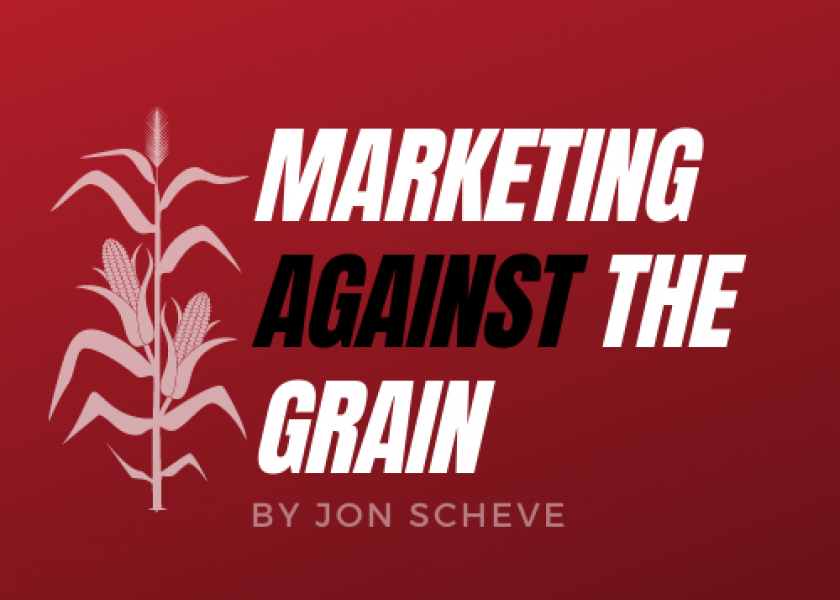Why "Free" Storage Isn't Really Free And Actually Hurts All Farmers

Missed a recent article by Jon Scheve? Get it sent to you directly every week. Send a request by email: jon@superiorfeed.com
Market Commentary for 12/24/21
This week beans rallied on fund buying due in part to weather concerns in South America. After the 3-day holiday weekend, price direction will be largely dependent on weather forecasts and if funds want to keep buying.
Some are suggesting that Brazil’s yields have been reduced 2% due to lack of rain in the southern part of the country. However, even a 4% yield reduction would still match Brazil’s record crop produced last year. Plus, 70% of Brazil’s growing area is receiving adequate or better than normal moisture. Therefore, with what we know today, it may be a stretch to expect total production to drop below last year’s levels.
Technical analysis suggests futures have turned bullish as beans closed above $13, and some suggest continued dry weather in South America may send prices to $14. However, if next week’s weather forecasts include precipitation the market could pull back and technicals could suddenly look bearish again.
Also, US farmers seem to be selling into the rally as reports indicate truck lines at processors developed quickly once prices hit $13. This may be causing the January to March futures spread to widen and basis demand to pull back slightly. Right now, the market may be getting enough supply and prices are high enough to attract cash sales.
Preventing The Use Of “FREE” Storage
Once again “free” storage is being advertised throughout the corn belt. While some also call it “price later opportunities,” “delayed pricing” or “DP” it refers to when farmers sign over their grain to an end user, and then wait to price the grain later, hopefully at higher values.
On the surface, “free” storage seems like a win-win for farmers and end users. These “free” storage programs are a great way for end users to procure grain supply during the winter. And farmers can move their grain now when they are not busy, and price later during a potential rally. Unfortunately, “free” storage ends up costing ALL farmers, those using it and those that do not.
Why Does “Free” Storage Hurt All Farmers?
When end users offer this program, it is usually because they are having difficulty procuring enough grain to meet their immediate needs. Typically, “free” storage offerings spur a rush of quick ship grain and helps end users get through a month or two of difficult origination. However, this ultimately keeps basis prices artificially lower than the bids end users should be willing to pay for grain right now. In other words, why would end users push their basis bids up when they are getting plenty of grain delivered?
How Much Are Prices Impacted?
Basis level suppression from “free” storage is likely 10-20 cents in an average year, but it can run higher pending local conditions. For example, in areas throughout the US where production issues occurred this year (i.e., like central Missouri and North Dakota) where farmers need for “free” storage is nonexistent we can see basis values that are 50 cents higher than normal.
Why Do Basis Levels Fluctuate So Much?
Often it goes up when farmers quit selling because they don’t have grain left to sell or they think prices will go much higher. The only way an end user can encourage grain to move to their facility is to raise basis to generate sales. End users usually drops basis bids when there is plenty of supply moving into their facility.
So, when no farmers are using “free” storage programs basis values will need to increase to entice farmers to move grain. Those higher bids translate into increase prices for all farmers in that area.
But “Free” Storage Offers Several Conveniences to Farmers
True, some farmers argue that with “free” storage they do not have to worry about their grain’s condition in the bin or when to move it. Plus, they get the flexibility of being able to sell at potentially higher prices down the road.
Again, these conveniences seem good on the surface; however, the farmer has limited their pricing opportunities. These farmers are now committed to the prices that end user is offering, and usually that means current month basis bids that run at lower values than forward bids. This “forced” discounted price is part of the cost for the "free" storage.
Another problem with “free” storage is that when farmers place a sell order on their “free” stored grain, it is usually for a cash price sale. This allows end users to know the price many farmers are willing to sell at, because they can see all the pricing orders that are placed. If many farmers pick the same general price point to sell, end users can fade their basis bids back as that price point approaches. While this basis fade may only be 2-5 cents, the “free” storage program just cost farmers in that area a little more money.
Just A Few Farmers Using “free” Storage Hurts All Farmers
It only takes about 20% of farmers in an area to commit 50% of their production to "free" storage for end users to procure about a month's worth of needed production. This can bridge end users until the next round of farmer selling, right before planting season, and suppress prices for all farmers locally. These lower basis values trickle throughout the marketing area surrounding the end user and can even impact farmers in markets further away.
Nothing Is Ever "Free"
In grain marketing there are always hidden costs. And, for "free" storage programs the hidden costs hurt ALL farmers not just the ones that participate.
So, encourage your neighbors to not use “free” storage. Following is a list of what to mention:
- End users offer it because it is extremely beneficial for them and not the farmer.
- No end user would offer something for free if there was not a way for them to profit from it in some way.
- “Free” storage users contribute to price suppression for not just themselves, but all farmers in the area.
- Using “free” storage means they will be locked into using an end user who knows what the farmer is willing to sell their grain for and could artificially lower price a little bit.
- The minor conveniences they are getting come at a huge cost to not only them but YOU too.
Remember only YOU can prevent the spread of “free” storage.
Want to read more by Jon Scheve? Check out recent articles:
Are These Recent Rallies A Christmas Present Or Are They Sustainable Long Term?
Corn Spreads May Suggest Corn Is Undervalued And Needs To Trade At $6
How I Made Additional Profit In A Corn Market That Traded Between $5 And $6
Can Wheat Trade Above $9? And If It Does, Could That Mean $7 Corn?
Can Corn Trade Back To $7 Or Does It Drift Back To $5
What Is In Your Marketing Toolbox?
Can Corn Break Out Of The $5.10 To $5.40 Trading Range?
Jon Scheve
Superior Feed Ingredients, LLC
jon@superiorfeed.com







